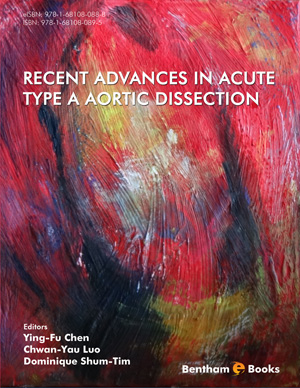Abstract
Brain protection is a critical issue in distal reconstruction of acute type A aortic dissection, during which the open anastomosis within the aortic arch inevitably requires temporary exclusion of the cerebral blood flow. Several brain protection strategies, either by decreasing brain metabolism or by supplying the brain with oxygenated blood, have been developed and widely investigated. This chapter reviews the history, rationale, experimental studies, and clinical results of different brain protection strategies. Their individual pros and cons, clinical comparative results, and evolving trends are discussed.
Keywords: Antegrade cerebral perfusion, Bilateral, Brachial artery cannulation, Carotid artery cannulation, Cerebral protection, Deep, Distal perfusion, Hypothermic circulatory arrest: Profound, Innominate artery cannulation, Mild, Moderate, Neurocognitive deficit, Open anastomosis, Permanent neurologic deficit, Retrograde cerebral perfusion, Right axillary artery cannulation, Spinal cord protection, Transient neurologic deficit, Unilateral, Visceral organ protection.






















